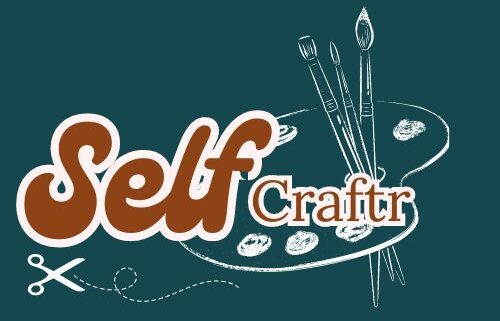Setting Monthly Goals: Your Roadmap to Success
We may earn a commission for purchases made using our links. Please see our disclosure to learn more.
Let’s discuss establishing monthly objectives. Why? Because without them, life might seem like a haphazard attempt to find a suitable place to land. Setting goals gives you direction. They serve as your own GPS, keeping you on course and focused. Dividing your big dreams into monthly goals is the game-changer you need if you’ve ever been overwhelmed by them. Let’s talk about how you can create significant goals and turn each month into a triumph!
Why Setting Monthly Goals Matters
Consider traveling by car without a map. Although it will take longer and require several detours, you might ultimately arrive at your destination. Monthly goals provide you with direction and purpose, much like your life’s tour guide. They assist you in avoiding procrastination and concentrating on what really important. Furthermore, nothing compares to the sense of accomplishment you get at the end of the month when you check a goal off your list.
The Power of Starting Small
Consider traveling by car without a map. Although it will take longer and require several detours, you might ultimately arrive at your destination. Monthly goals provide you with direction and purpose, much like your life’s tour guide. They assist you in avoiding procrastination and concentrating on what really important. Furthermore, nothing compares to the sense of accomplishment you get at the end of the month when you check a goal off your list.
The Importance of Clarity
Let’s face it, ambiguous goals are pointless. It won’t be enough to say, “I want to get fit.” Even so, what does that mean? Do you want to quit being breathless after ascending stairs or do you want to run a marathon? Your goals are easier to pursue when they are precise and unambiguous. Clarity is like your journey’s headlights; it lets you know exactly where you’re headed.
Reflecting on Past Achievements
Before diving into new goals, take a minute to look back. What did you accomplish last month? What could you have done better? Reflection isn’t about beating yourself up—it’s about learning and growing. Think of it like reviewing your game plan before the next match. When you know what worked and what didn’t, you can step into the new month with a smarter strategy.
The Magic of Writing It Down
Here’s a fun fact: goals that are written down are way more likely to be achieved. It’s like making a promise to yourself. Writing them down makes them real—it’s no longer just a thought floating around in your head. Plus, having a visual reminder of your goals keeps you focused and motivated. It’s like your personal cheerleader on paper.
Balancing Your Goals
Life’s all about balance, right? The same goes for your goals. Focusing only on work or personal life can leave you feeling lopsided. Instead, aim for a mix—professional goals, personal growth, health, and relationships. When you create balance, you’ll feel more fulfilled and less stressed.
Breaking Down Large Goals
Big goals can be intimidating, like staring at the top of a massive mountain. But when you break them into smaller, manageable steps, they suddenly seem doable. For example, instead of saying, “I want to save $1,000 this month,” you can focus on saving $250 each week. These smaller milestones keep you motivated and on track without the pressure of tackling everything at once.
Visualizing Your Goals
If you’re a visual person, this one’s for you. Seeing your goals laid out can make them feel more real. Use a calendar, planner, or even a vision board to map out what you want to achieve. It’s like having a treasure map—you know where you’re headed, and every step gets you closer to the prize.
Celebrating Milestones
Who doesn’t love a good celebration? Achieving even the smallest milestones deserves recognition. It’s like giving yourself a high-five for a job well done. Whether it’s treating yourself to your favorite dessert or taking a break to relax, these little celebrations keep your motivation high and make the journey more enjoyable.
Learning from Setbacks
Let’s get real—setbacks happen. Maybe you didn’t hit all your goals last month, and that’s okay. The key is to learn from them instead of letting them discourage you. Ask yourself, “What can I do differently this time?” Treat setbacks like speed bumps—they might slow you down for a moment, but they don’t have to stop you.
The Role of Accountability
Sometimes, just knowing someone else is keeping tabs on your progress can be the push you need. Share your goals with a friend, family member, or even a coworker. If you’re not comfortable sharing, use a journal or an app to hold yourself accountable. Accountability turns your goals into a shared mission, making it harder to give up.
Staying Flexible
Life is unpredictable, and that’s why flexibility is so important. Maybe halfway through the month, you realize one of your goals isn’t realistic anymore. That’s okay! Adjust your plan and keep moving forward. Flexibility ensures you don’t feel trapped by your goals, making the whole process much more enjoyable.
Journaling Your Journey
Journaling is like having a conversation with yourself. It’s a space to celebrate wins, vent frustrations, and brainstorm ideas. Writing about your progress helps you stay connected to your goals and gives you a chance to reflect. Plus, looking back on your entries months later can be a great reminder of how far you’ve come.
Injecting Fun into Goal-Setting
Who says goal-setting has to be boring? Add some fun to the process to keep things exciting. Use colorful pens, stickers, or apps to personalize your planner. When you make it enjoyable, setting and achieving goals feels less like a chore and more like an adventure.
The Science Behind Effective Goal Setting
Goal setting has been extensively studied, with compelling findings underscoring its impact on performance and achievement. According to a comprehensive review of Goal-Setting Theory: A 50-Year Review of Its Evolution , specific and challenging goals significantly enhance performance by directing attention, mobilizing effort, increasing persistence, and motivating the development of effective strategies. Similarly, The Science & Psychology of Goal-Setting 101. highlights the psychological mechanisms at play, emphasizing how clarity and difficulty in goals contribute to higher motivation and results. These studies reinforce that structured goal setting is not just an art but a science-backed approach to achieving success.
Products to Boost Your Goal-Setting Success
Equipping yourself with the right tools can make all the difference in achieving your monthly goals. Amazon offers a variety of products designed to help you stay organized, motivated, and focused. Check out these highly rated options:
1. Moleskine Classic Notebook
A timeless favorite for goal-setters, the Moleskine Classic Notebook is perfect for jotting down your monthly objectives, tracking progress, and reflecting on achievements. Its durable hardcover and high-quality paper make it a reliable companion for daily use.
2. The Full Focus Planner by Michael Hyatt
This planner is tailored for individuals aiming to maximize productivity. With sections for daily task prioritization, goal reviews, and time-blocking, the Full Focus Planner helps you align your actions with your aspirations.
3. Smart Planner Pro
This planner combines monthly, weekly, and daily layouts to help you structure your goals. Its built-in habit tracker and to-do lists make staying consistent and accountable easier. The sleek, minimalist design is both functional and aesthetically pleasing.
4. Progress Tracker Whiteboard by Cinch!
If you prefer a visual approach, the Cinch! Progress Tracker Whiteboard is a great choice. Designed for goal and habit tracking, it features a customizable layout that lets you see your progress at a glance. Mount it in your workspace to keep your goals in clear view.
5. Erin Condren Goal Setting Journal
This beautifully designed journal offers guided prompts, vision mapping pages, and reflection sections. The Erin Condren Goal Setting Journal is ideal for those who want a structured and inspiring way to plan their monthly goals.
These products are great companions for staying organized and motivated throughout the month. With tools like these, you’ll be better prepared to turn your goals into reality!
FAQs About Setting Monthly Goals
1. How many goals should I set each month?
Stick with 1-3 goals to avoid overwhelming yourself. It’s better to focus on a few meaningful goals than to stretch yourself too thin.
2. What if I fail to achieve my goals?
Failure is just feedback. Reflect on what went wrong, adjust your approach, and try again. Progress is what matters, not perfection.
3. Should I set goals in all areas of life?
Absolutely! A balanced set of goals ensures growth in every aspect of your life, from personal to professional to health.
4. How do I track my progress effectively?
Use a journal, planner, or app to monitor your progress. Regular check-ins help you stay on track and make adjustments as needed.
5. Can I change my goals mid-month?
Of course! Life happens, and sometimes goals need to evolve. Adjusting your goals ensures they remain relevant and achievable.
Setting monthly goals isn’t just about productivity—it’s about designing a life that feels purposeful and fulfilling. With a little planning, reflection, and flexibility, you can make every month count. So, what are you waiting for? Start setting those goals and make this month your best one yet!




